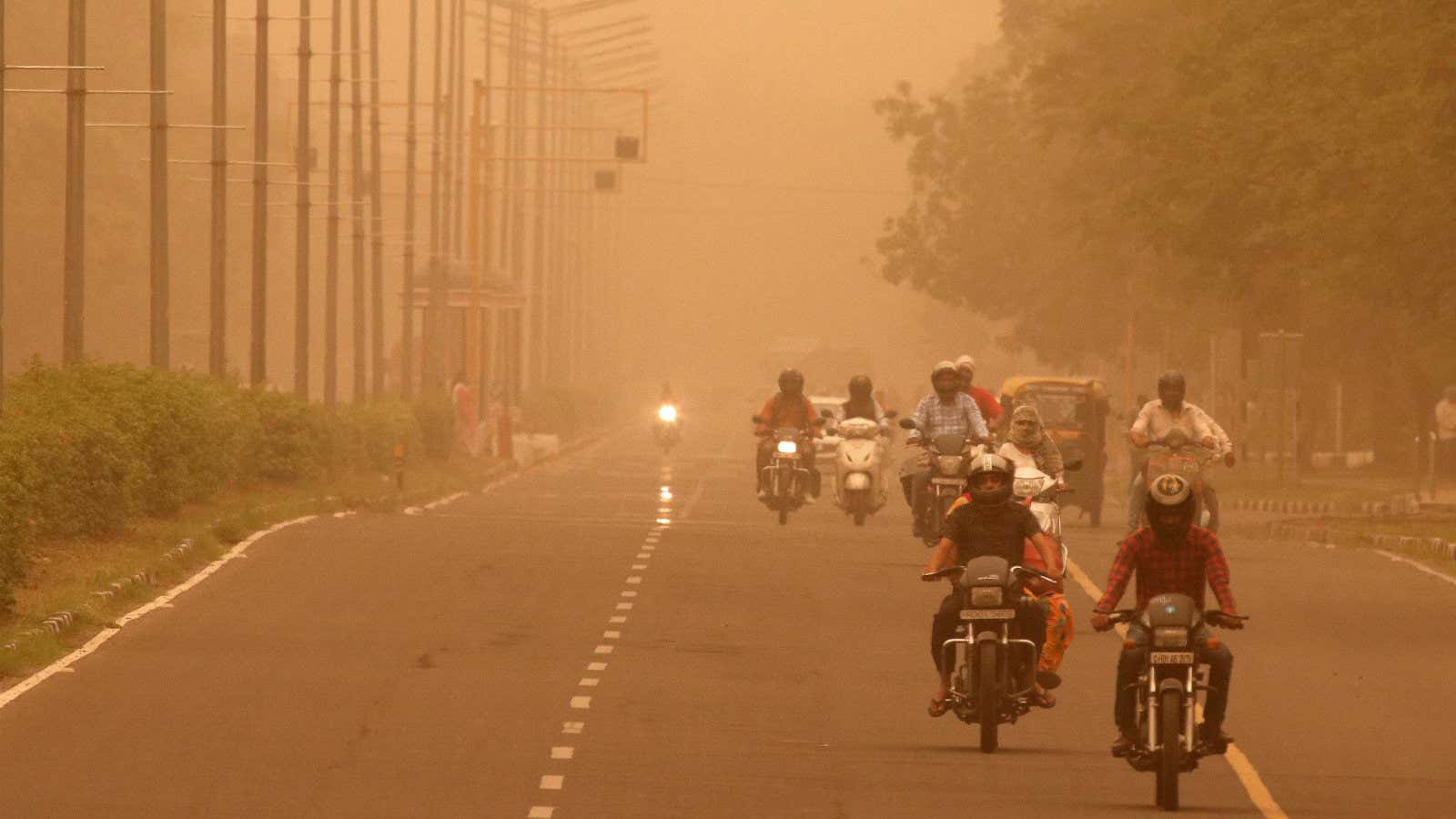Particulate matter (PM) can be as deadly as tobacco smoking or even cancer. And India’s cities, which routinely rank among the world’s most polluted, are choking on them.
Air pollution caused by PM of a diameter under 2.5 micrometres (PM2.5) reduces the average life expectancy of Indians by 1.53 years, according to a paper published in the journal Environment Science and Technology Letters. The impact of PM2.5 is particularly high in south Asia, where it decreases life expectancy by 1.56 years, far above the global average of 1.03 years, the paper says.
The paper was written by researchers from the University of Texas, University of British Columbia, Health Effects Institute in Boston, Imperial College London, and Brigham Young University in Utah.
Using data from the 2016 Global Burden of Disease study, they calculated the decrease in life expectancy that could be attributed to PM2.5 levels in 185 countries.
The researchers estimated the cost of air pollution in terms of life years by modeling the data on deaths from diseases for which air pollution is a risk factor, including heart disease, strokes, and lung cancer. They then compared this data to each country’s baseline life expectancy.
To put their findings in context, they compared these figures with the estimated decrease in life expectancy caused by other risk factors, such as tobacco consumption and cancer. In south Asia, tobacco smoking caused a decrease of 1.51 years and cancer 1.26 years, both slightly less than the impact of PM 2.5.
“In short, the burden of disease from air pollution results in life expectancy decrements of a magnitude similar to those of other high-priority risk factors and diseases,” the researchers write.
This matters because while the risks of tobacco smoking, for instance, are now fairly widely known, thanks to sustained public health campaigns, air pollution is a year-round risk but still not taken seriously.
In New Delhi, for instance, average PM2.5 levels were around 97.4ug/m3 between 1998 and 2005, according to researchers at the Indian Institute of Technology, Delhi, and The Energy and Resources Institute. That’s more than twice India’s safe limit of 40ug/m3. Yet, it’s often only when the national capital chokes under thick toxic smog in winters that sales of anti-pollution masks and air purifiers spike.
